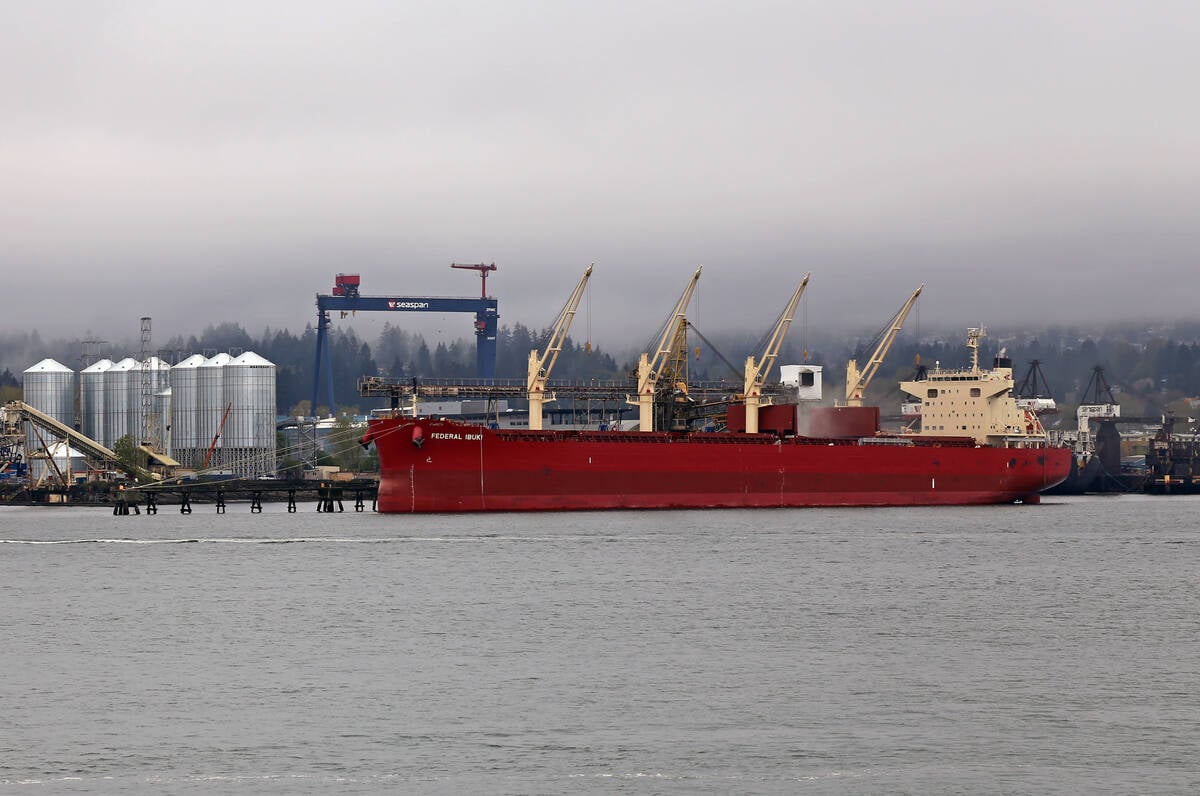It will come as no surprise to Manitoba and Saskatchewan farmers that last year’s floods ranked as the number one weather event of 2011.
In his 16th annual listing of Canada’s top 10 weather events, Environment Canada senior climatologist David Phillips said he could have compiled 10 top weather stories from this event alone.
“It was like the flood that wouldn’t end,” he said. “It was the winter flood that became the spring flood that became the summer flood.”
Phillips said water levels on Manitoba’s Assiniboine River reached one in 330 year levels, and the high water on Lake Manitoba was a one in 2,100 year event.
Read Also

Vancouver port says it has improved efficiency
Grain movement has been strong at the Port of Vancouver due in part to a new centralized scheduling system.
A record number of acres were flooded and various levels of government spent nearly $1 billion fighting spreading waters and compensating victims.
That was part of the cost that made 2011 the second most expensive year ever recorded in terms of insurance payouts and damage.
The most expensive was 1998, when Eastern Canada was hit with an ice storm.
Number two on the 2011 weather list, the fire that devastated Slave Lake, Alta., accounted for $700 million in payouts and another $400 in uninsured losses.
“The insurance industry actually says that this is probably the largest number of private homes lost from a single event in Canadian history,” Phillips said.
“And what we do know is that this is the second most expensive disaster in Canadian history from an insurance point of view.”
Arson is indicated as the cause of the disaster, but Phillips said dry conditions and strong winds contributed to its scope.
The May 15 fire was followed several weeks later by 17 consecutive days of rain. The 200 millimetres that fell were followed three weeks after that by another 100 mm.
“They thought it was biblical. I mean, fires and floods and where were the locusts? That’s what the thinking was.”
Agriculture was the primary beneficiary of the number four event on the list: the cool and wet prairie spring that transformed into a hot summer and long, warm harvest season. Phillips referred to it as “doom to boom.”
As a nasty winter turned into a cool wet spring in 2011, farmers were concerned about crop prospects and seeding was delayed across much of the country.
“It was potentially a big hit, billions of dollars on the economy of the West,” he said. “Then a remarkable thing happened. Someone turned the faucet off. Summer came.”
The long, hot autumn allowed crops to mature and harvest to be completed without major losses.
The year was also notable for the unusual summer.
“This summer, depending upon where you live, was the summer of summers for middle Canada and was really disappointing for the coasts, where summer came but it seemed to be after Labour Day.”
Summer’s heat was a result of a huge dome of air trapped over 40 U.S. states and the four central provinces. Ontario recorded many record highs and people in and near Winnipeg were ecstatic, Phillips said.
“You couldn’t say anything nasty about the summer in Winnipeg. Even the mosquitoes left town and went to Edmonton, and the Jets came home.”
The most troubling weather event on the list, from a long-term and global perspective, was the record low Arctic sea ice, said Phillips.
“In 2011, we saw the sea ice extent … diminish to its second lowest in 50 years. We saw the volume of ice to be its lowest ever, eight percent lower than it was the previous year.”
Number 10 on the list was high winds in Alberta in November. Though southwestern Alberta is known as one of the windiest places in Canada, speeds recorded during Grey Cup week were noteworthy.
Phillips said wind reached speeds of more than 144 km/h and there was an unconfirmed report of 200 km/h in Pincher Creek.
Part of downtown Calgary was shut down when the wind blew out window glass in high-rises. Damage across southern Alberta is still being tallied.


















